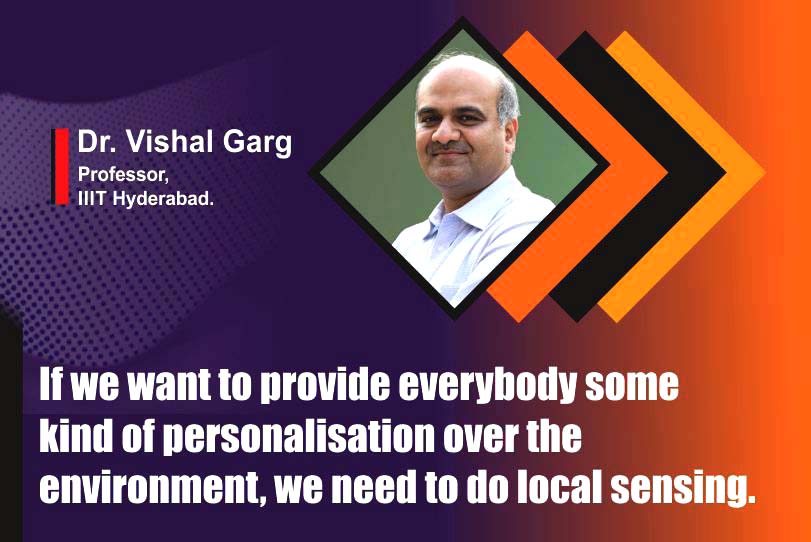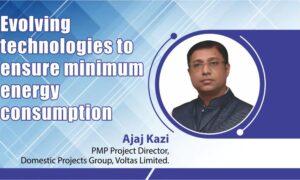Basically, we know that when there is a demand response event, we need to reduce our demand. And there are a lot of ways people try to achieve it. And it can be either shutting down a particular service, say for example, air conditioning in a building or changing the set point, so that the load reduces in case of air conditioning, the set point can be increased.
Demand response
Sometimes, we shut off some buildings in a group of buildings and try to reduce the demand. So there are various ways this is done. But, mostly it is done at the building level, and the building manager decides what is to be done, and the users have no control. Many times users don’t even know that demand response is there, and they are expected to reduce their loads. So let us see how we can bring individual users to this demand response event and they participate. And collectively, we try to reduce the demand in the building, while maintaining preferred comfort levels as per each individual. So it’s very common to see multiple people occupying any space. Some people find it comfortable, some people don’t find it comfortable, same temperature, same conditions, and some people may complain that it’s a little too hot. And some people may say it’s too cold.
Different people have different requirements, even when the conditions are the same, but because the requirements are different, they might perceive the space to be either too hot or too cold. Other times, the actual conditions might be different in the building. So here you can see that some part of the building or the space rather, is warmer because of the solar radiation entering from the window. And the inside part of the space is cooler, and therefore people sitting next to the window would complain that it is too hot. And people sitting inside the core would say that especially to cold. So there can be a non uniformity of temperature in space.
Personal comfort
So how can we deliver personalised services, it’s not just air conditioning, it can be lighting, also, it can be any other service that an occupant would like to have. And the occupant would like to have personalisation over his or her space and control the parameters of the services. So how can we do that? So there’s a lot of work going on in this area and this is called personal comfort systems. Here you can imagine that there is a table fan, there is a light beneath this cabinet, that’s the task there is a foot warmer. So different kinds of devices are being developed, which can help people control the conditions in their task environment.
There are also chairs which are developed which can have their own heating element. They can also have a fan. So the cheer which will keep you cool or provide you warmth in the winters and then it can have its own control unit so that you can control the velocity or the temperature then there is a floor radiant heating systems where through the floor relatively the body can get heat and again we can sometimes not only give heat we can also be cooled by having chilled water adding to these panels and provide comfort to the user. So there are so many different ways people are developing personal comfort systems.
Sensors to measure humidity
A lot of cutting edge work is happening at the Centre for built environment in Berkeley in the US. So, the issue is that if we want to provide everybody some kind of personalisation over the environment, we need to do local sensing, we need sensors in each of these spaces to measure what is the temperature humidity, whether the space is occupied or not, if the person is getting clear or not, we have to understand what are the loads that are connected, suppose somebody has connected a computer, a laptop monitor or coffee maker or any of such devices there, then you have to make these talk to each other we need communication framework. So that within the tasks, these elements can talk to each other, and they can talk to the space conditioning system also. So, like the task light table lamp is talking to the lamp on the ceiling in this space. And that is then talking to the BMS, and then the user has an interface through which the user can get the feedback to monitor what’s happening in the space and also control.
Benefit for individualised comfort
This integration is required between the tasks and embeds. So, what is the benefit we can provide for individualised comfort? If people are getting individualised comfort they are more satisfied with the environment and their productivity is expected to be better and it can lead to energy savings and also good demand response. In the picture there are cold spots as well as hotspots. So it’s like a micro environment that is a bubble and the base of this micro-environment or bubble is controlled by the user. So we don’t have to cool the whole space, we can have spot cooling and we can save energy.
So how we are doing we have a radiantly cooled desk. Let there be partitions in a cubicle and chilled water enters this cubicle and the cubicle transfers the heat to the user to radiation. So, the user can control how much should be the temperature of this partition and can control the you know the coolth or the cool that the person is getting there, then there is a smart hub, this hub gives control over the task environment and I show you how this whole thing works. And the user can then decide how much heating, how much cooling, how much lighting, how much power the user needs, and when there is a demand response even the user can reduce the requirement and participate in the event. We also have a US patent on this mechanism of demand response at the task level.
So, let us see what happens during the demand response event. There are two ways demand response events can happen. One, when there is no limit to the power supply you can get as much power as you want, but you have to pay. So, this is a time of the day for variable tariffs and you pay more at certain times of the day.
Another kind is where the limit is there for the power irrespective of the cost, because one is willing to pay this load. This is a load that can be serviced and cost is fixed, we are going to talk about the second one where there is a limit on how much load can be put onto the system. So, let us say there is a campus there are two buildings, there is a solar PV of 600 kilowatt, there is a diesel generator of 1400 kilowatts and there are four buildings and the total load of these four buildings is equal to them generation of 2000 kilowatts at a given time.
Smart hub interface
Suppose, there is no power available from the grid and the generation is happening on site. Assume that there is a decrease in the solar radiation and therefore the generation reduces from 600 Watts to 400 Watts, then what will happen, now every building will get a new target. So instead of 400 kilowatt building number one has to now consume only 360 kilowatt. This message is passed to each floor. And, each floor now has a target. That means each floor has a target. For example, if it is another company or an entity, they get their own targets. And then those targets are transferred to the individual users. So every user will now get a target to reduce energy consumption to the Smart Hub interface.
Now, whenever the user gets the warning that you are consuming more, and your target is 300 Watts, you are consuming 400 watts. So users here select to reduce the air conditioning. So essentially, load is reduced, the fan speed increases to provide a little bit more comfort, and the consumption goes down to 300 watts. In this case, the user doesn’t want to compromise on thermal comfort, the user selects to reduce the plug load thus reducing the Laptop charging stops, the battery is used for doing the work, and the user is able to drop down the load.
Now, let us see the third scenario. In this case, there is a power user and this user doesn’t want to reduce anything he doesn’t want to compromise air conditioning by somebody who is willing to pay. And then there is this person who is willing to share half the load. So, this person who is roughly 300 now gets lux of six or eight, and the other person takes a break and goes for a coffee or something.
The idea is that in a small time frame of five minutes, can we reduce the demand by 50 percent with everybody’s participation and everybody deciding what preference they want for their comfort.
Cookie Consent
We use cookies to personalize your experience. By continuing to visit this website you agree to our Terms & Conditions, Privacy Policy and Cookie Policy.














